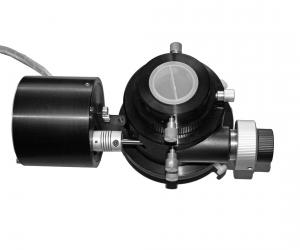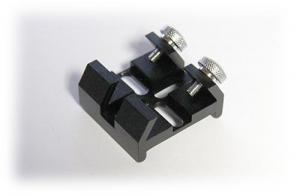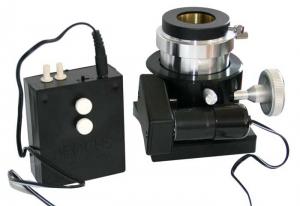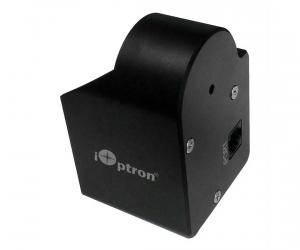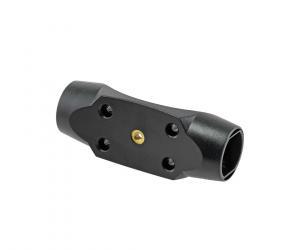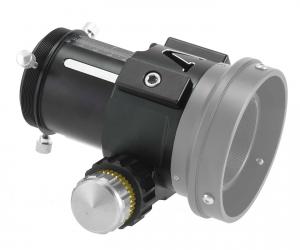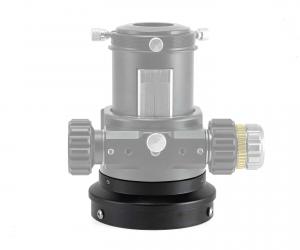- Telescopes
- Overview:
Telescopes - Achromatic Refractor
- Apochromatic Refractor
- Overview:
Apochromatic Refractor - ED Refractor - less color aberration than an achromatic
- SD APO - color free 2-element APO objective
- EDT APO - 3 element ED objective
- High End APO with 3-element APO objective - no color aberation
- Flatfield APO with flat field for Astrophotography
- All Apos and EDs from all manufacturers - large overview
- TS APO and ED from Japan with high quality optics
- Overview:
- Newtonian Telescopes
- Dobsonian Telescopes
- RC Ritchey Chretien Telescopes
- Casssegrain Telescopes
- Reflektor Telescopce with Lens Correcture
- Maksutov Cassegrain Telescopes
- GoTo Telescopes
- Solar Telescopes H-Alpha
- Overview:
- Mounts Tripods Rings Rails Power Supply ...
- Overview:
Mounts Tripods Rings Rails Power Supply ... - Mounts Equatorial with GoTo
- Mounts Equatorial without GoTo
- Mounts Azimutal with GoTo
- Mounts Azimutal without GoTo
- Mounts GoTo - Harmonic Drive
- Travel mounts for astro imaging
- Tripods Piers Polar Wedges
- Mount Control & Electronics
- Dovetail Clamps, Plates and Mount Adapters
- Tube Rings
- Power Supply
- Counterweights Balance Weights
- Mount Accessories - Other
- Overview:
- Telescope Accessories
- Overview:
Telescope Accessories - Eyepieces
- Barlows & Reducer Lenses
- Diagonal Mirrors and Prisms
- Binocular Viewers
- Finder Scopes
- Telescope Collimation and Test
- Cleaning Tools
- Transport and Storage
- Dust protection for Telescopes & Accessories
- Stray Light Protection
- Dewcaps and Heater
- Focusers, Adapters, Motorfocus
- Telescope DIY & Improvement
- Other telescope accessories
- Replacement Parts
- Overview:
- Filters
- Overview:
Filters - Color Filters and Color Filtersets
- Nebular Filters for Visual Observing
- Neutral-Density and Polfilter
- Photo Narrowband Nebular Filters
- Photo Broadband Filters
- Photo Planetary Filters
- Photo R-G-B and IR Cut Filters
- Photo - Filtersets
- Photometric Filters
- Clip Filter for DSLR Cameras
- Filter Wheels and Filterslider
- Solar Filters for white light
- Solarfilter for H-Alpha and Calcium
- Overview:
- Adaptors
- Overview:
Adaptors - Adapter 1,25" and 24,5mm
- Adapter 2"
- Adapter T2 - M42x0.75
- Adapter M48x0,75
- Adapter M54
- Adapter SC
- Adapter M63
- Adapter M68
- Adapter to other Threads
- Adapter Extensions
- Adapter camera bayonet
- Adapter Objective Filterthread
- Adapter Quick Changing , Rotation
- Adapter Eyepiece Projection
- Adapters Tilting
- Overview:
- Astrophotography and Photography
- Overview:
Astrophotography and Photography - Cooled Cameras
- Cameras without Cooling
- Deep-Sky Cameras uncooled
- Set-Offers Camera, Filter, Wheels
- Acessories for Cameras
- Travel mounts for astro imaging
- Imaging Correctors for Telescopes
- Autoguiding Cameras & Sets
- Everything for Guiding
- Focusing aids - Bahtinov mascs
- Flat Field foils and boxes
- Lenses for Cameras
- Piggyback Camera Holder
- Camera Bags, Photocases & more
- Digital Camera and Smartphone Adapter
- Other photo accessories
- Overview:
- Binoculars, Spotting Scopes, Microscopes, Range Finders
- Overview:
Binoculars, Spotting Scopes, Microscopes, Range Finders - Spotting Scopes and Acessories
- Roof Prism Binoculars
- Binoculars with Porro prisms
- Binoculars from 100mm Aperture
- Binoculars with 1,25 inch eyepieces
- TSMX APO Binoculars
- Binoculars for Astronomy
- Binoculars Hiking Bird watching
- Monoculars - Opera Binoculars
- Accessories for Binoculars
- Range Finders
- Microscopy
- Bags for Phototripods & Binoculars
- Overview:
- Phototripods and Binomounts
- Books, Software
- Overview:
Books, Software - Books for Astronomy Beginners
- Star Charts and Planispheres
- Books about our Solar System
- Observing Tips for Amateurs
- Popular Astronomy Literature
- Teaching material
- Astrophotography books
- Telescopes, Observatories, Construction
- Calendars Yearbooks
- Software, Star Charts
- Books for Microscopers
- Books Nature and Animals
- Nature Photography TimeLapse
- Overview:
- Night Vision, Magnifiers, Weather, Domes & more
- Beginner Astronomy and Gift Ideas
- Second Hand & Special Offers
- New products
Manufacturer: -TS Zubehör
Product number: MonorailR96
EUR249.90new
EUR 249,90
incl. 19 % VAT (DE)
The VAT indicated refers to that applicable in Germany. After logging in, the VAT amount is adjusted to the applicable VAT of the stored delivery country. Therefore, the final price may vary accordingly.
excl. 6.95 € shipping costs (DE)
more details to the shipping costs ...Please log in to calculate shipping costs to your country.
rating: 4.5 of 5TS-Optics MONORAIL 2" Refractor Focuser - Dual Speed - for 96 mm Flange5
- Details..
- Technical data..
- In the box..
- Manufacturer infos..
- Safety informations..
TS-Optics 2" MONORAIL Focuser with 96 mm Flange
The TS Monorail focuser for many refractors from Skywatcher, Celestron and Orion is an improvement of the time-tested Crayford focusers. Our goal was to offer a focuser for highest loads, like heavy CCD cameras, with very high precision at the same time. We exactly succeeded in this with the Monorail focusers.The MonorailR96 has a 96 mm connecting flange on the telescope side with three M4 internal threads and a 360° rotation. This allows the connection to ED refractors from Skywatcher and Orion with an aperture of 80 mm or more as well as achromatic Skywatcher, Celestron and Orion refractors with an aperture of 102 mm or more.
Attaching a viewfinder shoe
The grub screws marked on the third picture above can be removed and one or two finder shoe(s) can be attached with one M4 screw each. Make sure that the screw used does not reach deeper into the focuser than the grub screw! Otherwise, the focuser may be damaged.The advantages of the TS Monorail focusers at a glance:
Operating principle of the Monorail focuser and the advantage compared with Crayford focusers:
 Instead of small ball bearings, like in Crayford focusers, a massive stainless steel rail handles bearing and also lateral fixing.
Instead of small ball bearings, like in Crayford focusers, a massive stainless steel rail handles bearing and also lateral fixing.The disadvantage of Crayford focusers with ball bearings: The small ball bearings of the Crayford focuser are loaded if locked. As the locking screw is not placed exactly between the ball bearings, one pair of the bearings is more heavily loaded. This results in tilting and unsharp stars in one corner.
The advantage of the MONORAIL principle: The function of the ball bearings is taken over by the stainless steel bar which is firmly connected to the draw tube. Nothing can bend anymore. Only lateral guidance is taken over by ball bearings. These bearings only fix the lateral position and do not need to take on load anymore.
The drawtube is fixed with a locking screw which is exactly centered at the upper side, so the entire construction is evenly loaded. Tilting is definitively avoided, the draw tube stays exactly at the given position.
With the middle screw of the "quincunx", only the friction is adjusted - see image at left.
| Telescope connection: | Flange, 96 mm diameter with three radial M4 thread bores |
| Eyepiece side connection: | 2" receptacle with compression ring and reduction adapter to 1.25" |
| Minimum height from telescope flange to 2" receptacle: | 94 mm |
| Draw tube travel: | 50 mm |
| Scale: | mmm and inch |
| Dual speed: | included |
| Bearing: | Stainless steel rail - Monorail principle |
| Rotation: | 360° (continous) |
| Weight: | 860 g incl. 1.25" reduction adapter |
| Manufacturer / Importeur: | Teleskop-Service Ransburg GmbH |
| Street: | Von-Myra-Str. 8 |
| ZIP / City: | 85599 Parsdorf |
| Country: | Germany |
| Telefon number: | +49 89 99228750 |
| Email: | info@teleskop-service.de |
| Website: | www.teleskop-express.de |
Safety informations: PDF Download
Recommended accessories
Adaptors
Customers who bought this product also bought...
Finder & Accessories
TS-Optics Versatile Dovetail Mounting Base for Finder Scopes - Deluxe
EUR 19,99RRP EUR 28,00you save 28.6% (EUR 8,01)
General Accessories
Rigel nFocus Motorfckus for GSOl 2" and 3" Focusers
EUR 149,00RRP EUR 185,00you save 19.5% (EUR 36,00)
Similar Products
Reviews
Written by Andreas Röck
on 2022-10-26
"Alles Spitze. Kann ihn nur Weiterempfehlen "
Written by Kerry Kleckner
on 2022-03-18
The focuser arrived quickly. Hopefully it will work. There were no instructions of any kind included. There is no link for a PDF or other formatted information in the website item description. Teleskop Service was quick to tell me that my order was in shipping and could not be changed - so quick that I was not able to identify and order an adapter that will allow me to connect my camera and/or reducer to the focuser so I was unable to order it. Despite telling me that tracking information would be provided it was never provided. I emailed a question about attaching my reducer. I waited three days only to receive a vague statement saying that my reducer uses threads and the focuser does not. I can only hope that their products are of a higher quality than their POOR COOMUNICATION!
Written by Christian Rein
on 2022-03-15
"Auszug wird an eime 120mm Refraktor genutzt. Geniales Scharfstellen dank Mikrofokussierer. Funktioniert tadellos."
Written by Uwe Pilz
on 2022-01-05
"Ersatz für Skywatcher-Auszüge"
Written by Darren Hennig
on 2021-09-14
"Product is superb. Only critique is that there was no instructional link or documents included which would have saved my contacting TS directly before install and use. It was simple, but having that option would have confirmed everything. "
Written by Nils Lijster
on 2021-07-06
"In my refractor. It works perfect. Fits precisely"
Written by Christoph Dombrowski
on 2021-04-19
"wird an Skywatcher Startravel 120/600mm eingesetzt. Fokussierung gegen Original eine andere Welt!"
Written by Tom Regnery
on 2021-04-06
"Gekauft, um den 15 Jahre alten Crayford meines selbstgebauten Apos auszutauschen. Läuft ruhig, leichtgängig und präzise. Kein Verkippen des Bilds beim Richtungswechsel. "
Written by Miodrag Mandusic
on 2021-03-15
"Very good quality, fits perfectly on SkyWatcher StarTravel 102 (assembled in 2 minutes). It needs focal lenght extender for terrestial views."
Written by Gabor Juhasz
on 2019-12-11
"Well made focuser, smoothly working mechanics. Fits the 96mm diameter focuser side of my telescope well, assembly with the scope was easy. Recommended product."
Written by Victor Kuznetsov
on 2019-09-27
"Good quality product."
Written by Boris Markhel
on 2017-11-17
"Focuser of excellent quality. He lived up to my expectations. No problem came up for my telescope tube. The focus of the focuser is very smooth, there are two speeds, for coarse focusing and for precise focusing. I recommend to sell. The focuser is excellent."
Written by Ludwig Reil
on 2017-03-03
"Am ED80/600, passt genau und ist in Minuten getauscht. Produkt wie beschrieben Auszug ist sehr stabil und läuft weich. Für Sucher muss separate Halterung angebracht werden. "
Written by Christoph Ballod
on 2016-10-20
"Der Auszug ist zum Original verbauten ein Unterschied wie Tag und Nacht!Präzises und zitterfreies Fokussieren steigert die Freude beim Beobachten erheblich. Alles ist sehr wertig und stabil verarbeitet."










